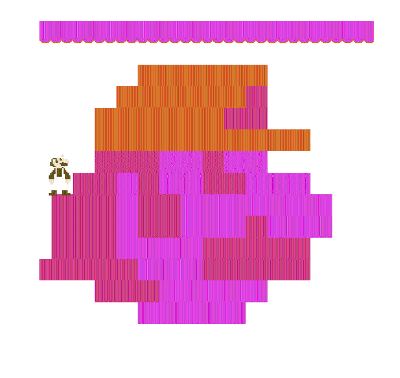CAITLIN JONES: Your work exists in multiple formats: as an object and as installation, but also as pure code that you freely distribute over the internet. Now that you’re starting to sell work in the art market, what does this multiplicity mean to a collector or an institution that buys it? Is it something that you think about? Do you really care?
CORY ARCANGEL: Not really. [Laughs] It just means it’s better, right? That the work will exist in all these different worlds, that it is circulating in all these other forms—and, especially valuable, it will be circulating on the internet. So you know eight trillion more people are going to know what the project is—and they’ve actually been able to see it [not just a photo of it]. Which, for me, was the whole point in the first place.
—From an unpublished interview between the author and subject, July 6, 2005, Electronic Arts Intermix, New York, N.Y.
In 1997, eighty years after Marcel Duchamp deposited a signed urinal at the New York Society of Independent Artists and called it art, a number of artists who used the internet as their preferred medium were invited to participate in documenta, a major art exhibition held every five years in Kassel, Germany. Renowned for its controversial subject matter and its willingness to embrace new art forms, documenta seemed an ideal venue for what was then called net.art. These net.artists—an international, ad hoc collective of web art practitioners including Heath Bunting (UK), Vuk Cosic (Slovenia), jodi.org (Netherlands), Olia Lialina (Russia) and Alexei Shulgin (Russia)—were a community connected only through online networks and brief meetings at festivals.1
Politically and geographically isolated from the mainstream contemporary art market, these artists, particularly those from Eastern Europe and Russia, also saw the internet as a practical way to expose their work to a broad audience. In his 1993 essay elucidating the “utopian,” “revolutionary,” “equalizing,” “democratic” fervor inspired by the emergence of the internet, science fiction writer and internet-era sage Bruce Sterling observed, “Why do people want to be ‘on the Internet?’ One of the main reasons is simple freedom. The Internet is a rare example of a true, modern, functional anarchy. There is no ‘Internet Inc.’ There are no official censors, no bosses, no board of directors, no stockholders. In principle, any node can speak as a peer to any other node, as long as it obeys the rules of the TCP/IP protocols, which are strictly technical, not social or political.”2 Likewise, there was no “Art World Inc.,” no galleries or museums or collectors; no preconceived notions about what constituted art...
You have reached your article limit
Sign up for a digital subscription and continue reading all new issues, plus our entire archives, for just $1.50/month.
Already a subscriber? Sign in





